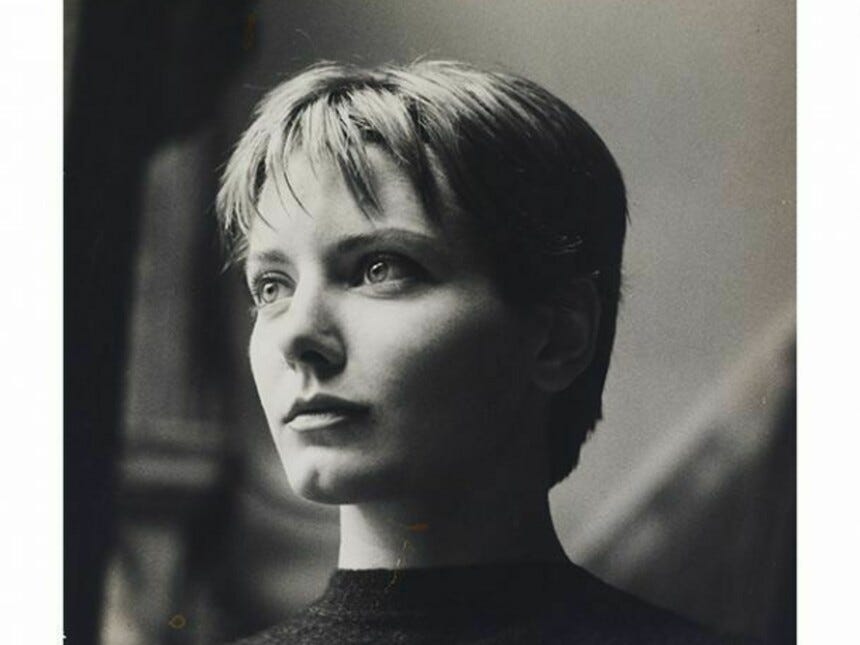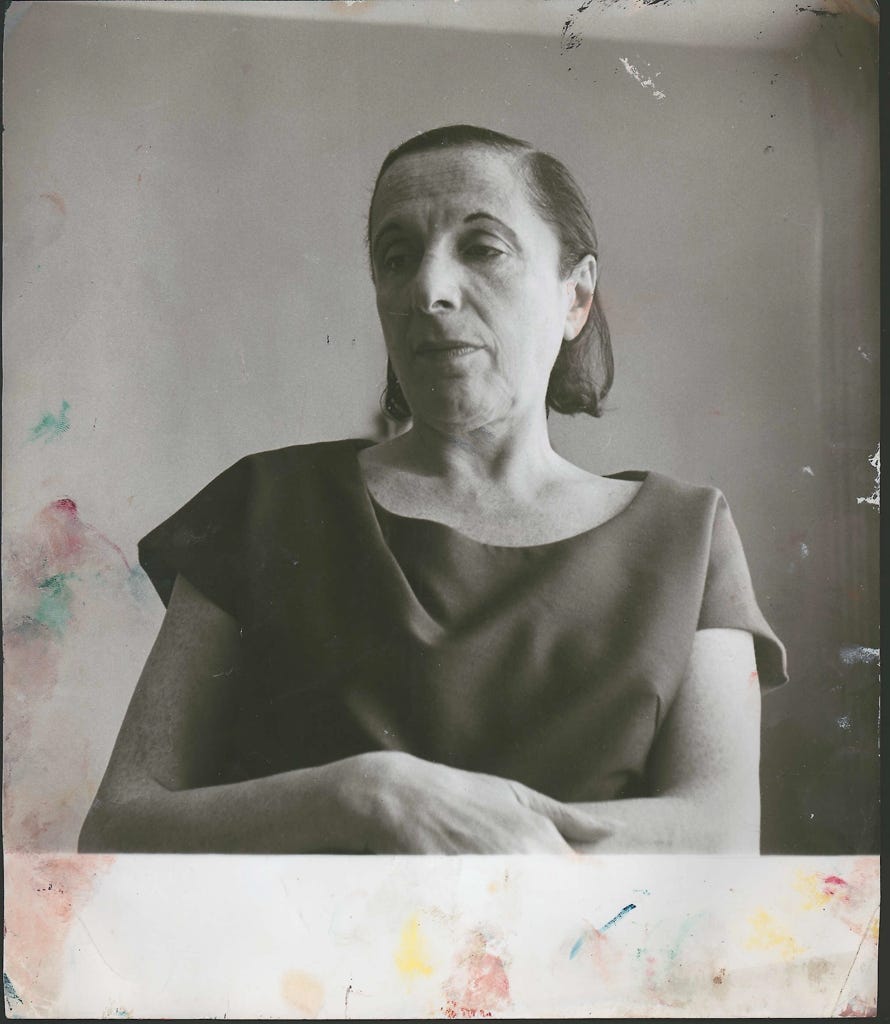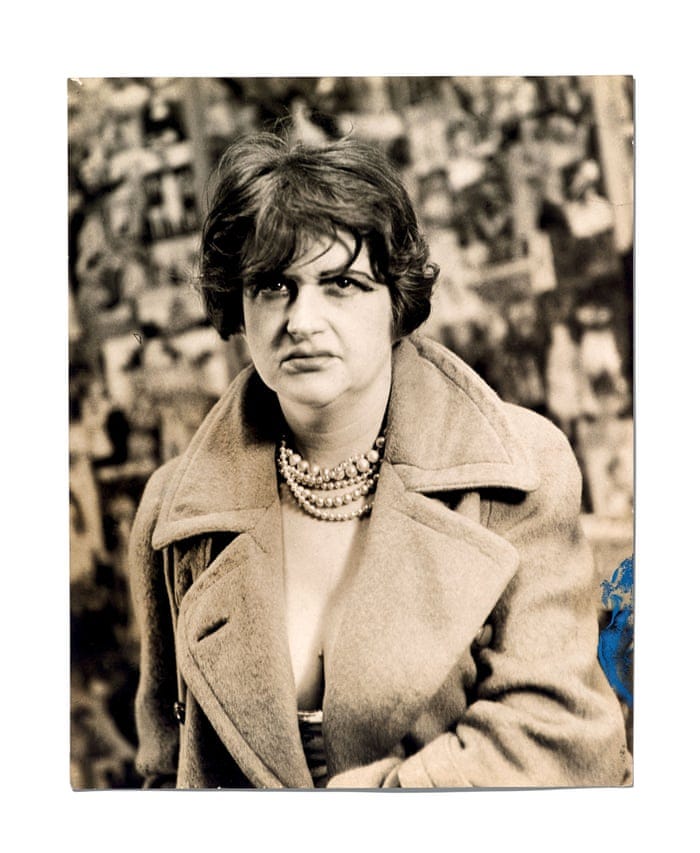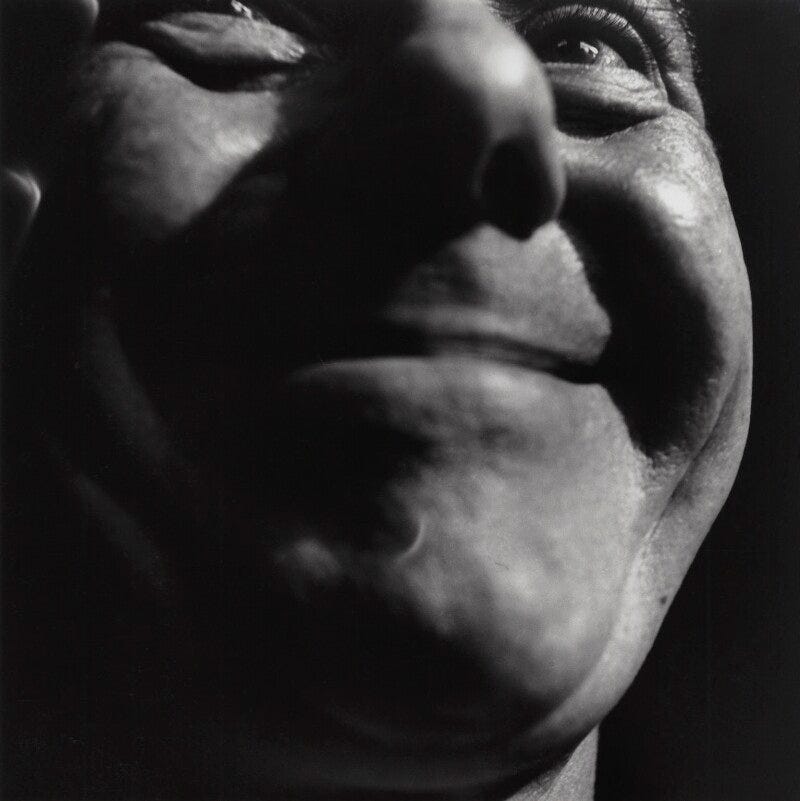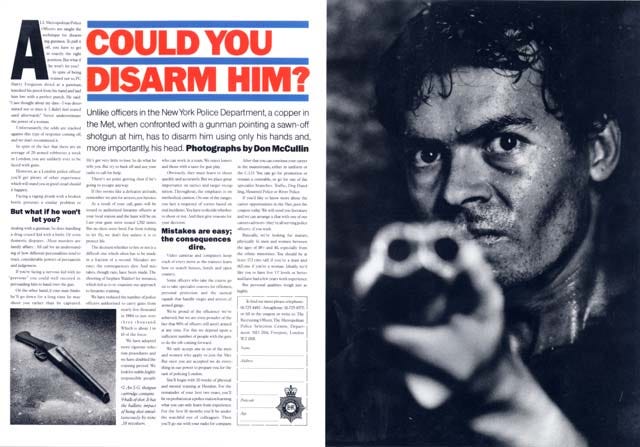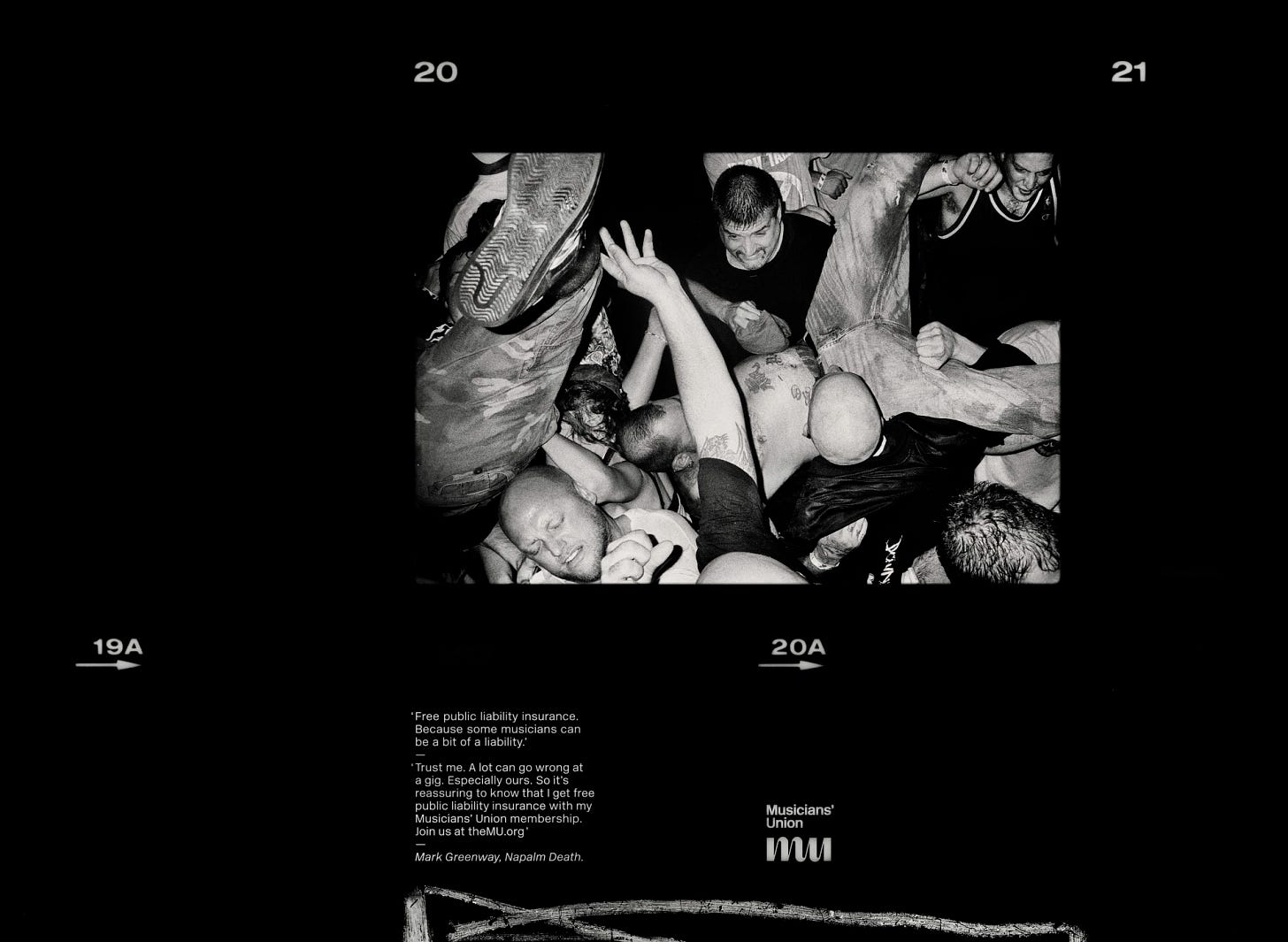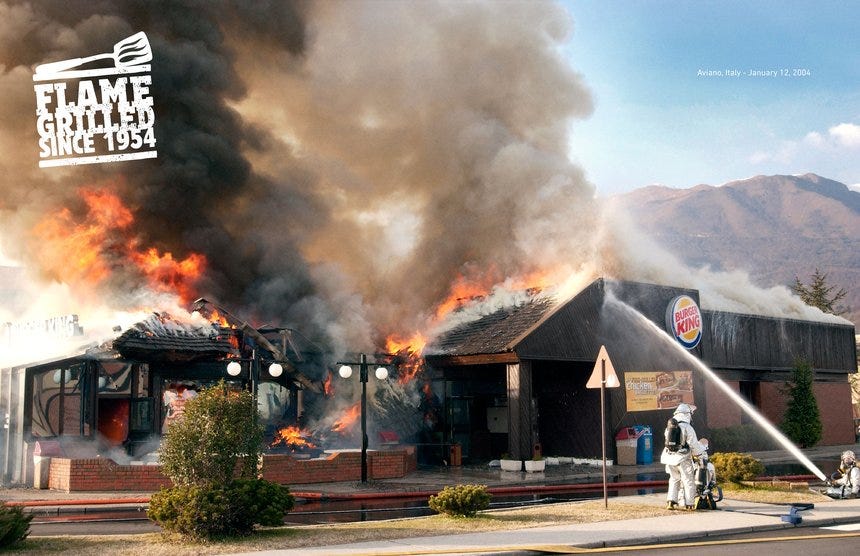John Deakin was a man who really put the seedy in Seedy Soho.
But in spite of all his odious behaviour, and despite the fact that he didn’t even really consider photography an art form, Deakin ended up not only creating some of the most iconic photos of the scene, but would also go on to influence a number of street and portrait photographers with his unflinching and aggressive style.
The 1960 proto-slasher film ‘Peeping Tom’ features a serial killer who affixes a blade to the front of a film camera in order to document the last moments of his victims.
And he wasn’t the only one…
Deakin made a photographic career from creating victims out of his subjects, his high contrast, high impact blow-up style eviscerated the faces, exposing every blemish, every imperfection – making a mockery out of the vanity of portraiture.
"Being fatally drawn to the human race, what I want to do when I take a photograph is make a revelation about it. So my sitters turn into my victims. But I would like to add that it is only those with a daemon, however small and of whatever kind, whose faces lend themselves to being victimised at all. And the only complaints I have ever had from my victims have been from the bad ones, the vainies, the meanies."
And it’s very possible that this approach was born out of a personal frustration and self-hatred – Deakin was a diminutive, troll-like creature with a sharp tongue, a pocked, alcoholic’s nose and a vile temperament.
Nevertheless, he maintained an uneasy friendship within the Colony Club Rooms circle – particularly with Francis Bacon who was essentially his benefactor and sponsor.
Deakin first picked up a camera in 1939, quite literally in fact – he found one left behind after a party in Paris. After taking photographs during the second world war it became his profession, eventually finding his way to Vogue Magazine where he became a staff photographer for the first time.
He was fired after one year when he lost a bunch of very expensive photographic gear.
But he got a second crack at Vogue in the fifties after some time in Italy shooting street photography. This time, he lasted a whopping three years before being sent packing for a litany of sins including drunkenness, lateness, loss of equipment and generally being a belligerent and difficult personality.
So back to Soho he went, where a fruitful period of work taking portrait photography for Francis Bacon would ensure his inclusion in the Colony scene, but also give him relevance after his inevitably early death.
Deakin's photos of George Dyer, Muriel Belcher, Lucien Freud and Henrietta Moraes would all be used by Bacon to create some of his most iconic works.
Bacon and Deakin seemingly shared a contempt for their subjects, and were willing to distort them beyond recognition and belief.
But whereas Bacon’s paintbrush could create nightmarish, high octane, highly emotive blurs of crazed mania, Deakin’s tool could only tell the truth.
Deakin was a visionary in this sense. His short stature meant that his Rolliflex, when held at his navel, looked upwards towards subjects – immediately finding the cruellest angle. Blown up and printed on off-white paper, they were something unique entirely.
His friend, writer Daniel Farson, described a typical Deakin portrait as "A prison mugshot taken by a real artist".
A real artist yes, but a really tragic figure most definitely. Deakin was a colossal alcoholic, but he was also phenomenally tight with his cash – what little he had after frittering it away on various vices – gambling mostly.
He clung on to Francis Bacon’s chequebook for dear life and the tab being stacked up at the Colony was tremendous.
But Bacon supported his friend until the end, funding a trip for him to Brighton where he could be treated for lung cancer and convalesce in peace, away from Soho.
Unfortunately he chose to do this above a pub, and in 1972 after one last almighty drinking session – he passed away. Bacon, named next of kin, was forced to come down and identify the body – “the last dirty trick he played on me” – he would remark.
Here’s another quote from Farson to finish:
“I am sure he will be seen as one of the most disturbing photographers of the century. The expressions of his victims look suitably appalled for Deakin had no time for such niceties as "cheese" and the effect was magnified by huge contrast-y blow-ups with every pore, blemish, and blood-shot eyeball exposed. In this way, he combined the instant horror of a passport photo with a shock value all his own."
His photographs are timeless, and as Soho morphs further away from its seedy past into its street-wear and sushi chain future we’ll always have the immediate thrill of Deakin’s photography to remind us of the past.
Unfiltered for Ad’s Sake
There’s safety in the glossy, the manicured and the edited.
But that safety is sometimes a prison.
Look at fashion, and the unrelenting march of minimalist, sans-serif logos.
Look at fashion editorials and the shift from the maximalist, the cinematic, the narrative towards the cold, tabula rasa of the white cyc and the single model.
Advertising isn’t always about selling dreams, most of the time it’s about selling a reality – a solution to a problem you might have, you might not realise you have, or that you have now decided you want to have.
But the reality often goes missing.
Missing in favour of the safe, warm embrace of the manicured image, the copy that serves only to serve up product benefits, the in-offensive montage of different people and the promise that “whoever you are, whatever you do, wherever you live, whenever you’re able, whichever person you might be today – you can enjoy this jar of product.”
The puns, the irresistible urge to use the words “unlock” and “discover” as if getting a new rate on an insurance plan will be the first domino to fall in some kind of majestic life-altering journey.
This is not branding, this is blanding*.
*Apologies. I literally could not resist writing that. I am but a flawed human copywriter…
And look, this isn’t meant to be a polemic or a whinge.
Sure, it might be a stream of conscious at 6:47 on a Sunday morning after I’ve been usurped from my bed by my 5-year old – but I promise that I’ll arrive at a point.
Unfiltered advertising doesn’t have to play out like a grim kitchen sink drama.
It doesn’t have to reflect all the miseries of the world to be real.
But it would be nice to see something a bit closer to the truth.
Publicité Vérité?
Here’s some examples that I like.
And ok – this first one hits hard like a Shaun Meadows film. And it is in a kitchen.
This is so beautifully well observed. A real slice of life. I have definitely shared it before but it’s in my Mount Rushmore of ads so…I don’t care.
Real recruitment advertising.
You can smell the sweat.
Start in the real world. Then take it to a silly place.
Life is messy
Life is chaotic
Now watch this Cassavetes rant about why audiences shouldn’t be treated like morons.
Fuck filters.
Like, comment and subscribe etc!
Thanks for reading,
Jonathan ✌️
Links for Ad’s Sake
📚 Where’s all the sad boy lit?
👽 The history of Starcraft
🦉 The decline of Hooters
🇬🇧 Wander around Britain
🖌️ Design IS copying










